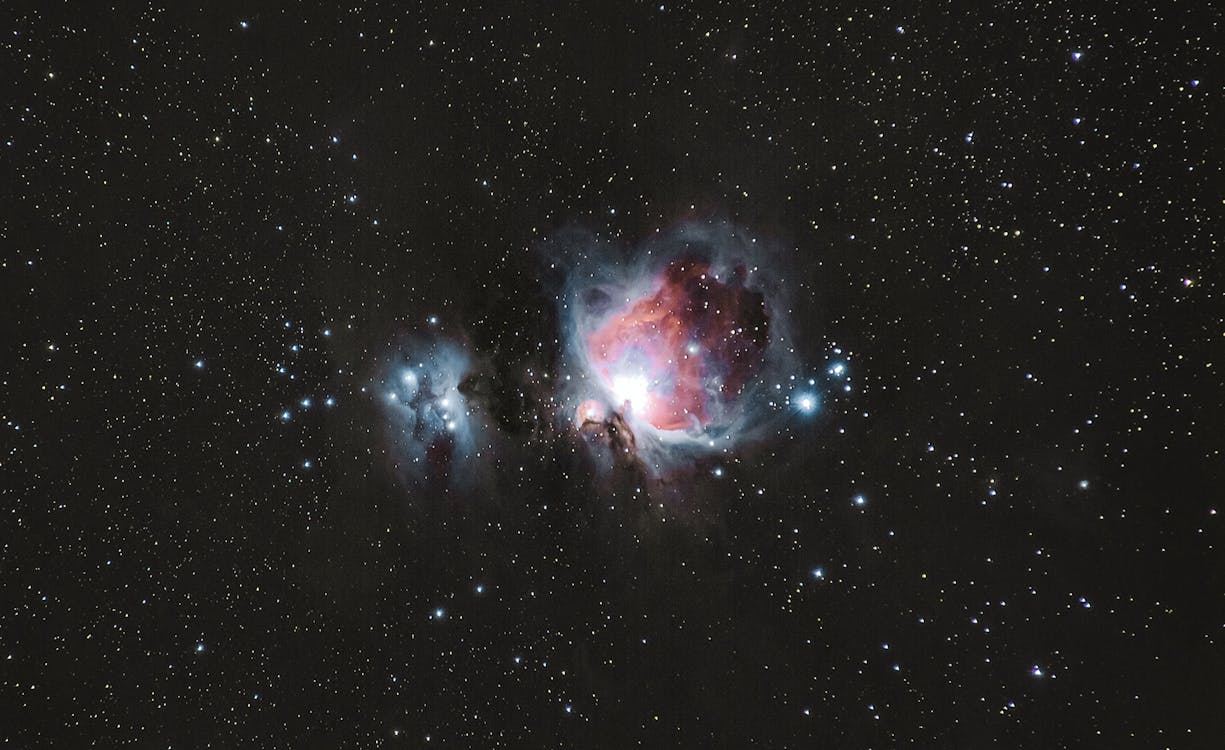Note: This article contains affiliate links. If you purchase a product through one of these links, Modern Sciences may earn a small commission at no additional cost. These commissions help support our site and allow us to continue delivering high-quality content for our Cultivators of Curiosity. Our recommendations are based on careful research and expertise, ensuring you receive the best guidance for your scientific explorations.

Note (23/08/2024): All prices listed here reflect item prices at the time of writing.
You may have looked up photos put up by the James Webb Space Telescope team recently or have found some photos of the Moon taken by individuals during eclipses and may want to take some for yourself. What would be your bare minimum equipment needed to take on such a task?
While it’s easy to say that looking up to the sky and seeing the stars for what they are is all that you would ever need, our eyes can only see so much; we are limited by radiation coming in from the visible spectrum, and even then we can only spot celestial objects within our segment of the sky. All that we can work on from there, outside of using special equipment that would allow us to see beyond the colors of the rainbow, is how far we can see into the sky at night. Enter telescopes.
Telescopes, by definition, allow us to see much farther than we would typically be able to view with our eyes alone. The stuff we want to look at in the sky at night is so far away that you can’t just pull up a pair of binoculars and expect to see what you want.
This, then, begs the question: what telescope should you get?
Now, we will be working off on budgets here, as these telescopes can get expensive fast. It’s essential to match your expectations with what type of telescope you can get; after all, the better the telescope’s resolving power (generally), the more expensive it can be.
With no further ado, here are some telescopes first-time skywatchers can use depending on your budget:
Under $300
Telescopes under this price threshold should allow users to view surface features of the Moon, alongside some of the nearest planets to Earth.
Celestron StarSense Explorer LT 114AZ
The Celestron StarSense Explorer LT 114AZ is a user-friendly, smartphone-guided telescope designed to open the night sky for beginners and seasoned enthusiasts alike. With its patented StarSense sky recognition technology, this 114mm Newtonian reflector uses your smartphone to analyze star patterns and pinpoint their location, allowing you to navigate to celestial objects easily. The StarSense Explorer app generates a tailored list of visible stars, planets, and deep-sky objects based on your specific time and location, making stargazing accessible even in urban environments. The manual altazimuth mount, paired with a slow-motion control rod, ensures smooth and precise tracking of your chosen target. Ideal for those new to astronomy, the StarSense Explorer LT 114AZ combines high-quality optics with innovative technology, providing a seamless and educational experience under the stars.
Find the Celestron StarSense Explorer LT 114AZ on Amazon.
Gskyer 130EQ
The Gskyer EQ130 is a versatile reflector telescope designed for novice and experienced astronomers eager to explore the night sky with clarity and precision. Featuring a 5.1-inch aperture and all-glass optical components with high transmission coatings, this telescope delivers bright and sharp images of the Moon, planets, and brighter deep-sky objects like galaxies and star clusters. The short 24-inch optical tube and fast f/5 focal ratio, coupled with a toothless focusing base, make it user-friendly for beginners while still offering the precision required by advanced users. The sturdy equatorial mount allows for smooth manual tracking of celestial objects as they move across the sky, while the adjustable stainless steel tripod ensures stability. With the included three eyepieces, a 3X Barlow lens, and a finderscope, the Gskyer EQ130 provides a comprehensive setup for detailed celestial observation. The wireless remote control, compatible with iPhone and Android devices, allows for easy capture and sharing of your stargazing experiences.
Find the Gskyer EQ130 here on Amazon.
SVBONY SV503 70F6 ED
The SVBONY SV503 70F6 ED refractor telescope is a versatile and compact option for seasoned astronomers and ambitious beginners seeking high-quality optical performance. Its objective lens features an S-FPL51 extra-low dispersion glass element, significantly reducing chromatic aberration to deliver sharp, high-contrast images ideal for astrophotography, lunar observation, and viewing nebulae and galaxies. The telescope’s lightweight design, weighing only 2.22 kg, and retractable dew cap make it highly portable and easy for mobile stargazing. With a 2-inch rack, pinion focuser, and dual-speed focusing system offering a 1:10 micro-reduction, the SV503 allows for precise focusing even when using heavy photographic accessories.
The SVBONY SV503 70F6 ED telescope is available on Amazon.
$300 to $500
From here, things get pricier and more powerful: these telescopes should allow you to resolve most planets in the Solar System,
Celestron StarSense Explorer 150mm Tabletop Dobsonian
The Celestron StarSense Explorer 150mm Tabletop Dobsonian is an innovative, user-friendly telescope that brings the wonders of the night sky to both novice and experienced observers. Equipped with a 150mm Newtonian reflector, this telescope offers a large aperture and parabolic primary mirror, providing clear, detailed views of planets, star clusters, nebulae, and galaxies. The patented StarSense sky recognition technology pairs with your smartphone to analyze star patterns, guiding you effortlessly to celestial objects. The stable, compact altazimuth base with Teflon bearings ensures smooth and precise movements, making tracking objects across the sky easy. Complete with 25mm and 10mm Kellner eyepieces, a StarPointer red dot finderscope, and the StarSense smartphone dock, this telescope offers a comprehensive stargazing experience right out of the box.
The Celestron StarSense Explorer 150mm Tabletop Dobsonian is available on Amazon.
Sky-Watcher Virtuoso GTi
The Sky-Watcher Virtuoso GTi is a versatile, collapsible tabletop Dobsonian telescope designed to provide both beginners and experienced astronomers with a powerful and convenient stargazing experience. Featuring a 150mm aperture and fast f/5 optics, this telescope delivers bright, bold views of the Moon, planets, galaxies, and nebulae. Its 750mm focal length ensures detailed observation of various celestial objects. The Virtuoso GTi has built-in Wi-Fi and full GoTo functionality, allowing seamless control via the SynScan Pro app on your smartphone. Sky-Watcher’s patented Freedom Find™ technology uses dual encoders for manual control while retaining alignment, offering flexibility during observation. The telescope’s compact, collapsible design makes it ideal for travel, backyard viewing, or dark sky getaways. With Radiant™ Aluminum Quartz coatings on all optical surfaces and included accessories like a red dot finder and two Plossl eyepieces, the Virtuoso GTi is ready to explore the night sky right out of the box.
Find the Sky-Watcher Virtuoso GTi on Amazon.
Above $500
It will be challenging to suggest telescopes beyond this price, as from this point forward, these telescopes become highly configurable, with varied possibilities of mounting, lenses, and other peripherals that you can use to customize your skywatching experience. Still, we try to give you some suggestions:
Celestron NexStar 130SLT
The Celestron NexStar 130SLT (available here on Amazon) is a versatile and compact computerized telescope designed for amateur astronomers and seasoned stargazers. With its 130mm Newtonian reflector, this telescope offers 30% more light-gathering power than the smaller models in the SLT series, providing detailed views of celestial objects such as Saturn’s rings, Jupiter’s cloud bands, and deep-sky wonders like the Orion Nebula. The NexStar 130SLT has a fully computerized hand control, allowing users to effortlessly locate and track over 4,000 celestial objects with pinpoint accuracy. Its portability and ease of setup make it an excellent choice for weekend excursions to dark-sky sites. At the same time, its SkyAlign technology simplifies the alignment process, ensuring that you spend more time observing and less time adjusting. The package also includes a StarPointer red-dot finderscope, Plossl eyepieces, and a free download of the Starry Night software for interactive sky simulations.











